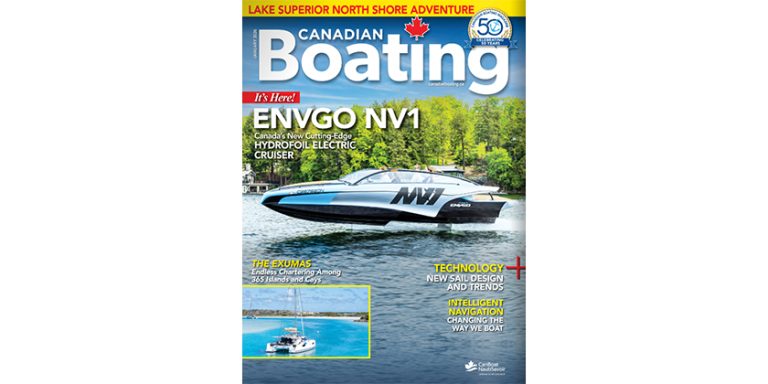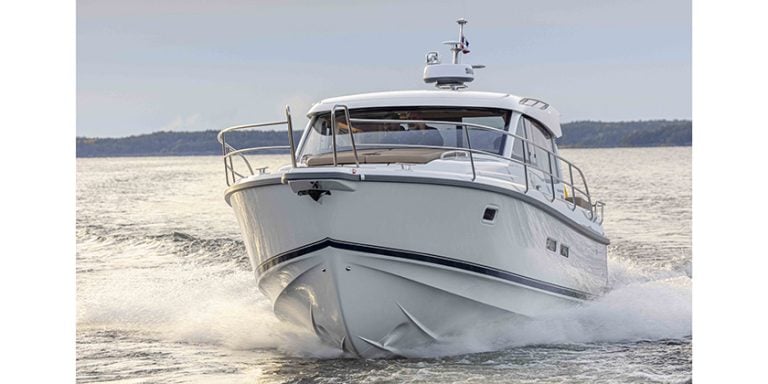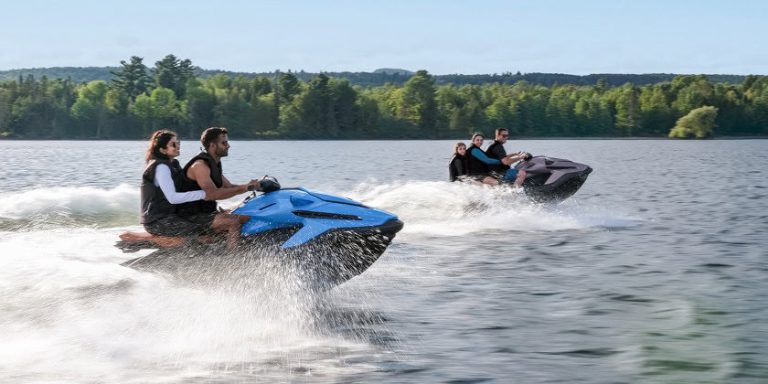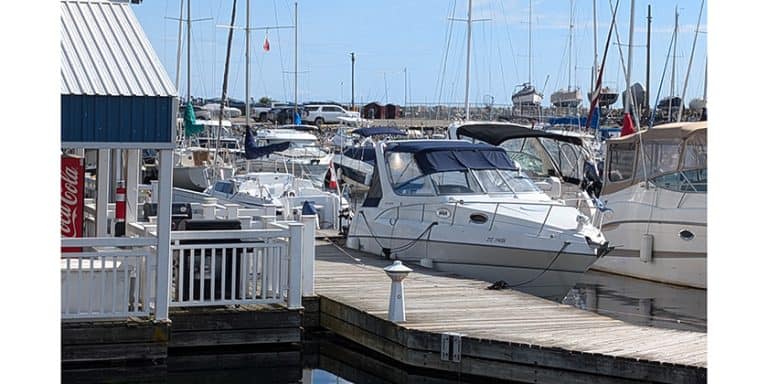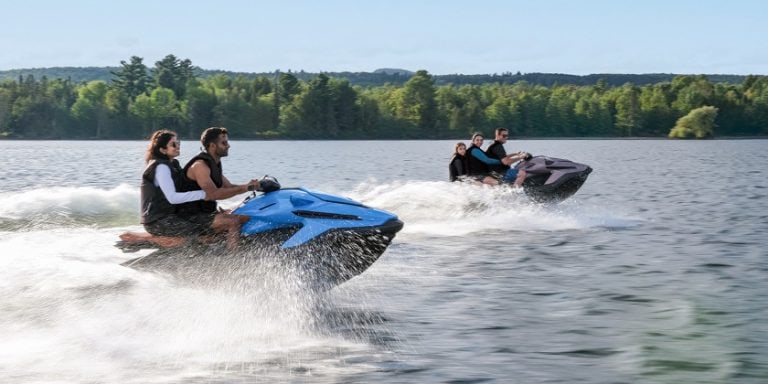Affordable Boating Freedom with a PWC
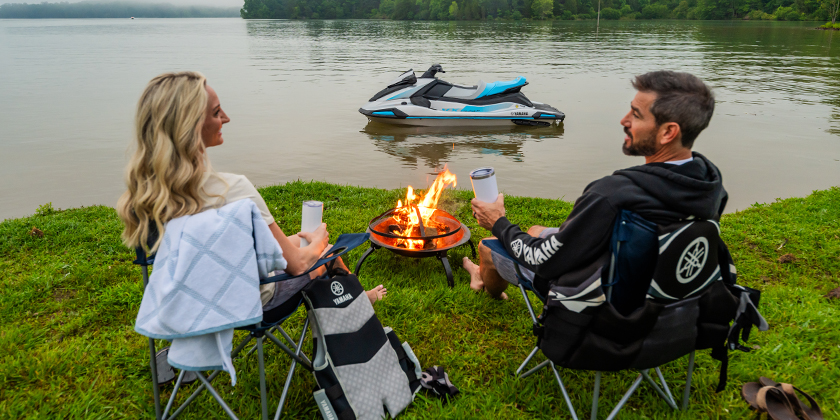
No wonder PWC sales are rising!
By Andy Adams
While almost every other boat segment saw sales declines in 2023, the National Marine Manufacturers Association in the U.S. reported a 15% year-over-year sales increase for personal watercraft (PWCs). PWCs are easily trailerable, small enough to store in your garage and yet able to cover long distances, carry passengers, tow for tubing and wake sports, go camping, go fishing, or just be a thrill!
It’s amazing to me that the first “personal watercraft”, the Sea-Doo, was introduced for the 1968 season, 56 years ago. Equipped with a small, air-cooled engine, it was noisy, low on power and the hull design was a clumsy performer. The next year, Bombardier went to a water-cooled engine with more power and today, their top-of-the-line RXP has a supercharged 325 horsepower engine that is smooth, quiet and almost stupefyingly fast. But, we will get to that in a minute.
First, let’s talk about the original models and the very annoying “yam, yam, yam” noise they made as the little boat jumped off even small waves. When that happened, (like most of the time) the jet pump would break suction, stop drawing in water and the engine would race for a second as it jumped and then “re-connected” with the water’s surface.
It was an annoying sound and when two or three of these were buzzing around your quiet cottage bay all afternoon, it brought a lot of push-back.
Today, the annoying “yam, yam, yam” sound is eliminated through better hull design, sound-silencing techniques and most importantly, computer engine controls that prevent the engine from racing like that.
How do they work?
Today, all the PWCs I know of have their engine forward under some form of a “hood” or front deck and it drives a jet pump with an intake under the hull and an outlet nozzle in the transom that is steerable. Some have an additional mechanism to let you reverse engine power to stop the boat and some designs use this to let you make fine docking manoeuvers.
The jet pump systems require very little water depth to operate and there is no exposed spinning propellor that could injure a swimmer.
Small but mighty
The latest engines with superchargers have immediate throttle response, incredible power and astonishing speed. Typically, most PWC are about 10-feet long with a beam a little over 4-feet wide. Depending on the model, weights seem to be from about 450 to 1,100 lbs. To be that small and have as much as 325 horsepower is amazing. What’s more amazing is that you can control all that power and speed. The boat may be small, but for high-performance models, you need to be in great physical shape to hang on and handle the PWC at the speeds it can easily achieve.
On the other hand, riding can be a good workout and a very satisfying experience. Equally satisfying is that you can get a machine, a trailer, and some important safety and comfort accessories for about $15,000.
If your friends also have PWC’s, you can plan a cruising camping trip in many places in Canada for you and your partner or with a group of your friends. Seriously – do Georgian Bay, the Trent Severn, the Rideau or a host of places in Atlantic Canada, Quebec, the Great Lakes, Georgian Bay, or even BC – the Interior or coastal. A good friend of mine took a group of Sea-Doos across the Bering Straight to Russia. I wouldn’t do it now, but they did it then! No limits!
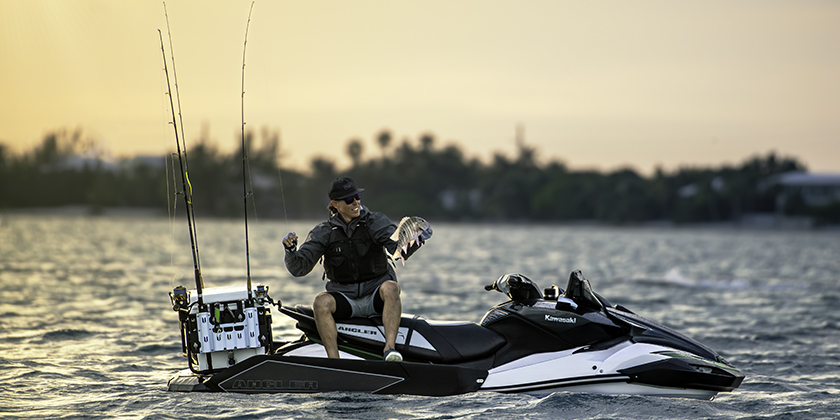
Who’s who in the zoo?
At present in Canada, in alphabetical order, we have Kawasaki, Sea-Doo, Taiga and Yamaha. Other companies also make personal watercraft, but they are not currently being marketed in Canada.
Kawasaki – https://www.kawasaki.ca/en-ca/
Offering several models including the Kawasaki Jet Ski stand-up PWC that is used for both recreation and in competition around the world, Kawasaki has models from beginner to expert riders.
For those with no previous experience or relatively little, Kawasaki offers this detailed and useful introductory video. It’s well worth the 15 minutes to watch. VIDEO: https://www.kawasaki.ca/en-ca/watercraft/jet-ski/stand-up/jet-ski-sx-r-160
Kawasaki offers a selection of one, two and three-person PWCs and their new 2024 Jet Ski Ultra 160LX-S Angler model is the one they most wanted to talk about. It’s a 3-passenger PWC specially equipped for fishing.
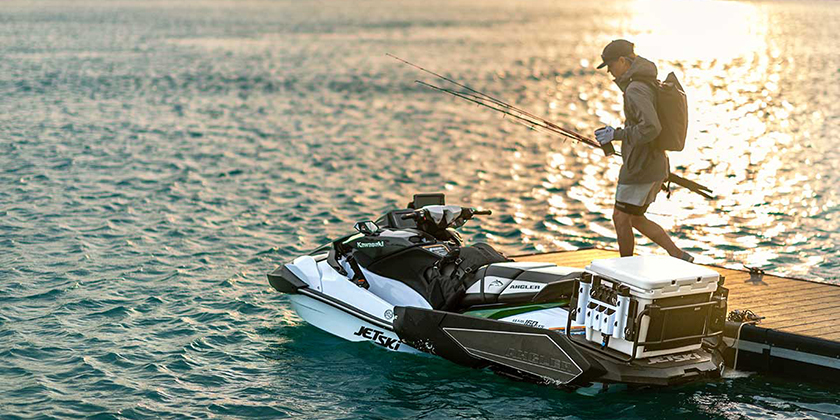
Powered by an in-line dual overhead cam, 16-valve four of 1,498 cc, the Ultra 160LX-S Angler has power to take up to three people fishing and an 80-litre fuel tank for good range. It’s a big machine measuring 140.9 inches in length on a beam of 49.6 inches and it weighs 1,056 lbs.
Special features include the 7-inch full-colour TFT LCD screen with GPS-based speedometer and a range of selectable data including an economical riding indicator. There is a separate 7-inch Garmin chartplotter, depth sounder and sonar fish finder system. At the stern, the Jet Ski Ultra 160LX-S Angler has a cargo area and a rack to carry a large cooler, rod holders and more.
There is almost no limit to what you can do with a Jet Ski Ultra 160LX-S Angler!
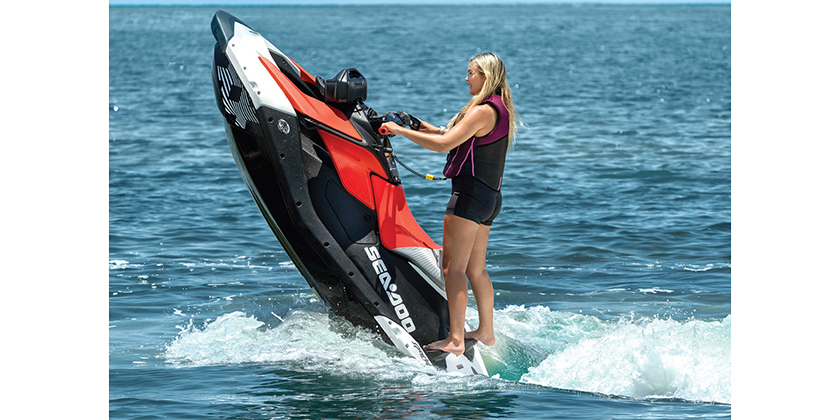
Sea-Doo – https://sea-doo.brp.com
The original personal watercraft born in Valcourt, Quebec, the Sea-Doo line now includes a wide range of models, accessories and prices to suit any desires.
The high-performance RXP-X model with the 325-hp supercharged engine is said to accelerate from 0-60 mph in just 3.4 seconds. That’s stunning performance and a real adrenaline rush for drivers who can hang on!
But super performance is not really needed for you to have a great day on the water. With an MSRP of just $8,699, the fun and easy-to-ride Sea-Doo Spark looks good, accommodates two people and is easy to tow behind almost any car. The 90-horsepower engine still delivers thrills and it can be equipped with many fun and convenience accessories, now or at a later date.
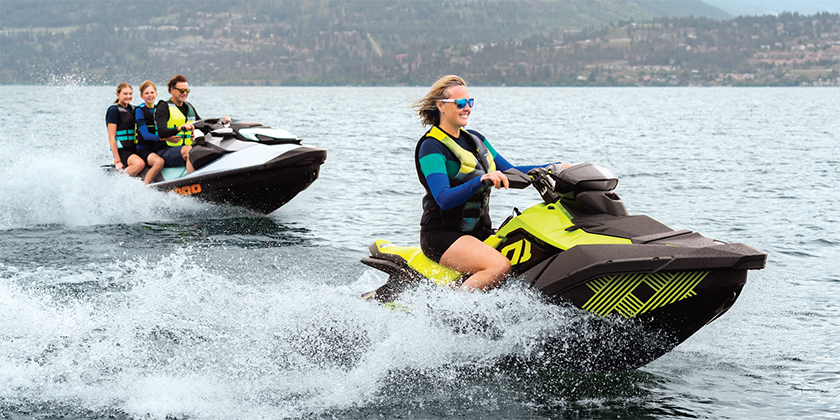
BRP also offers their own trailers through their dealers. Called the “Move” there are models like the Move 1 1250 that are ideal to carry a Sea-Doo Spark. It’s a bunk trailer with easy loading features and you can get a full weather cover if you want to leave your PWC on the trailer and outside. There are also Move II models that can carry two PWCs side-by-side – perfect for exploring and camping adventures!
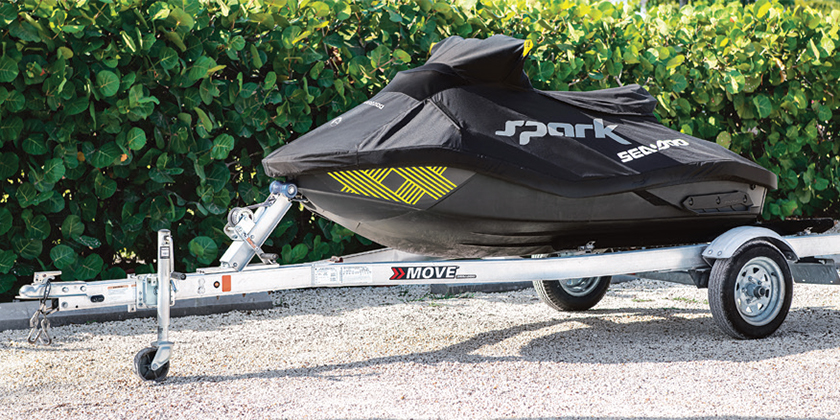
Taiga Orca – www.taigamotors.com
Canadian-made and designed, the Taiga Orca was the first electric PWC to hit the market and at present, it’s the only electric one we are aware of. With prices ranging from about $20,000 to about $34,000, the Taiga Orca has a Lithium-ion battery system that provides a range of up to 45 km from the electric motor that delivers up to 160-hp.
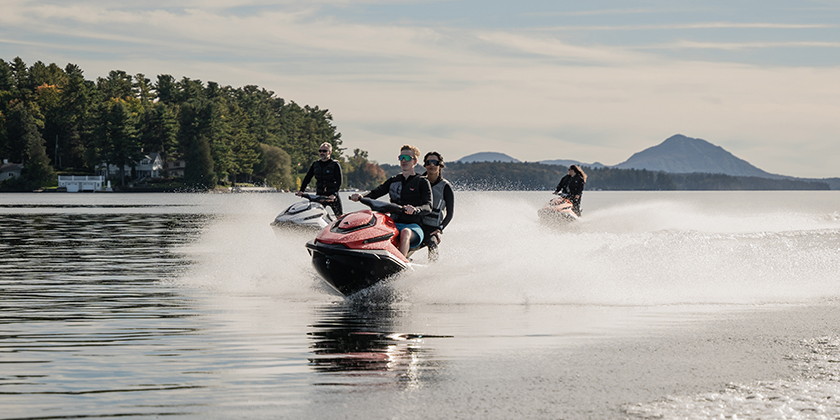
Like a Tesla, this is really a high-tech device as much as a personal watercraft and you can manage the driving and performance. There are three selectable drive modes. You can keep the younger ones from risk and then easily let the experienced riders go wild. The top speed of 100-kph plus is reached in what feels like an instant. There is no need for the engine to spool up – the electric drive delivers maximum torque at stall. All the power is on from the second you pull the trigger. I honestly had trouble hanging on!
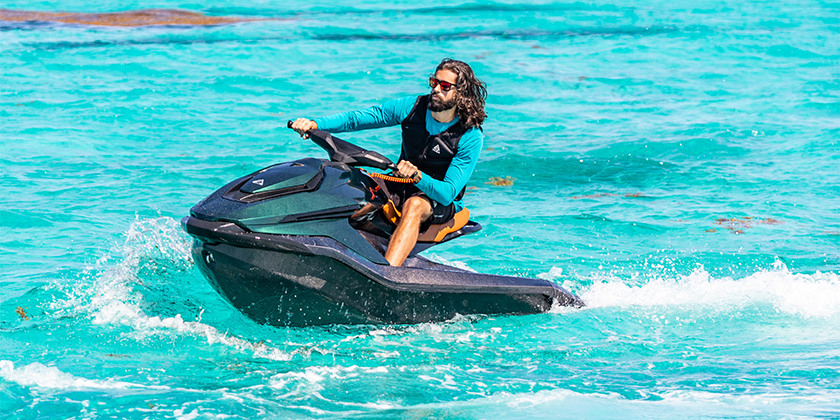
Silence is golden too. Mostly, all you hear is the rush of the wind and water and some slap from the hull as you fly across the bay. There is a nice 7-inch HD Display screen but at speeds in the upper range, my vision was just a blur. For families who want to make a positive statement about caring for the environment, a pair of Taiga Orcas would be just ideal. For cottage country, this would be fine but for those trailering their PWC, charging arrangements and range are things to consider.
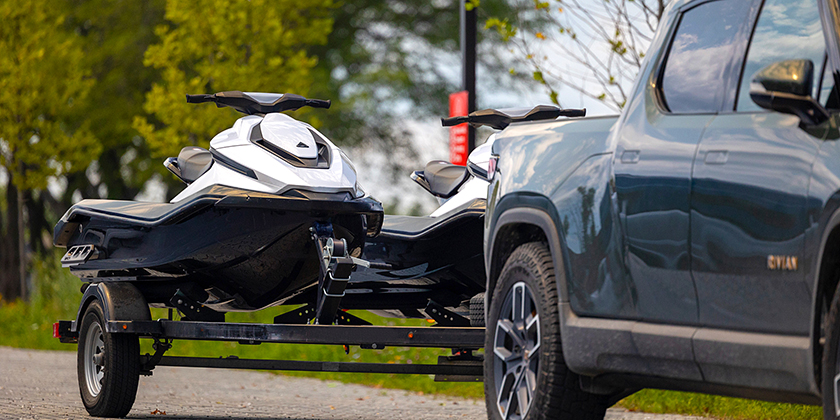
Yamaha WaveRunner – www.yamaha-motor.ca
With an extensive lineup of WaveRunners from the all-out GP SVHO equipped with Yamaha’s supercharged Super Vortex High Output 1.8 L engine to the first-timer or family-friendly Rec-Lite models starting with the EX Sport at an MSRP of $12,799, there is a WaveRunner to suit every need. Most three-seater models are capable of towing wake sports, carrying cargo and covering long distances in comfort.
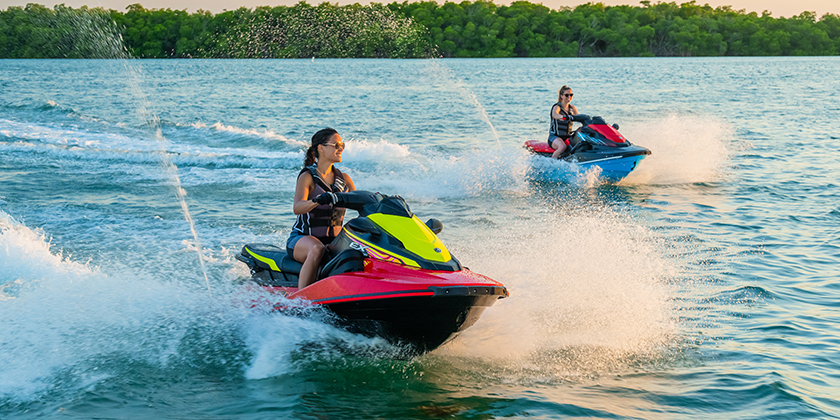
For a great selection of features look to models like the VX Cruiser at around $20,000 to get three-person comfort, more storage and the option of a factory-installed marine audio system. The VX Cruiser even has features like Yamaha’s Cruise Assist to set and hold a particular speed and you can increase or decrease with the touch of a button. Another great safety feature is the control system that accelerates when you pull the right lever and decelerates, or even reverses when you pull the left lever.
In Conclusion
There is a wide range of personal watercraft available with an amazing choice
of features and they are all easy to trailer behind most vehicles plus, launching or retrieving your PWC at the ramp is not complicated. Dress appropriately and that usually means at least some neoprene clothing, impact-resistant eye protection and neoprene booties to protect your feet and keep them warm when you are cruising. A personal floatation device (approved life jacket) is always required.
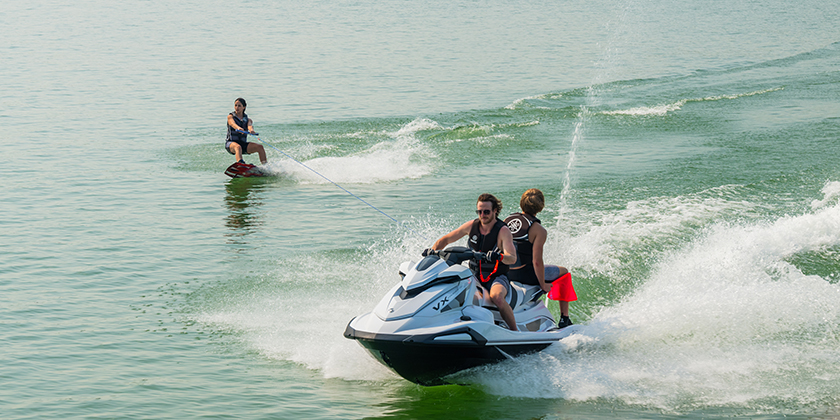
Most models have storage onboard to keep valuables safe, lunches dry and even drinks cold. Talk to your partner and your friends about getting into the boating lifestyle and consider what your summer could be like cruising and camping with your PWCs!

